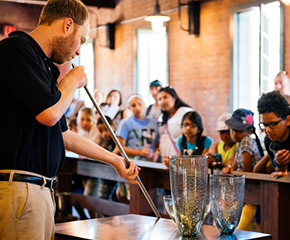One Row Corn Planter, circa 1855
Add to SetSummary
Farmers planted corn in hills during the 19th century. That started a year-round effort to raise food for livestock and farm family. Some used single-row planters like this. Then they cultivated with a shovel plow until corn was knee-high. They then planted squash or pumpkins to keep down weeds and retain moisture (a form of double cropping). At harvest they husked ears (to feed pigs) and shocked stalks (to feed cattle).
Farmers planted corn in hills during the 19th century. That started a year-round effort to raise food for livestock and farm family. Some used single-row planters like this. Then they cultivated with a shovel plow until corn was knee-high. They then planted squash or pumpkins to keep down weeds and retain moisture (a form of double cropping). At harvest they husked ears (to feed pigs) and shocked stalks (to feed cattle).
Artifact
Corn planter
Date Made
circa 1855
Creators
Place of Creation
United States, New Hampshire, Hampstead
United States, Massachusetts, Haverhill
Creator Notes
Attributed to a design by Lorenzo Bachelder of Hampstead, New Hampshire and Samuel H. Bachelder of Haverhill, Massachusetts

On Exhibit
at Greenfield Village in Soybean Lab Agricultural Gallery
Object ID
00.3.13404
Credit
From the Collections of The Henry Ford.
Material
Wood (Plant material)
Iron (Metal)
Dimensions
Width: 24 in
Length: 72 in





